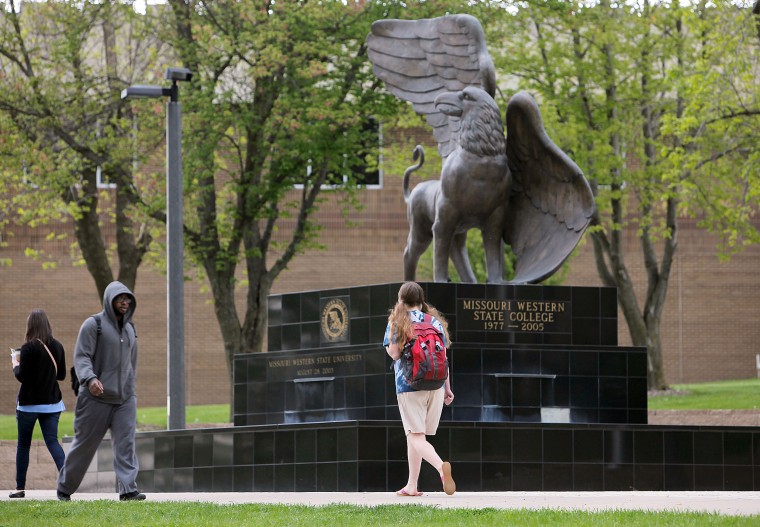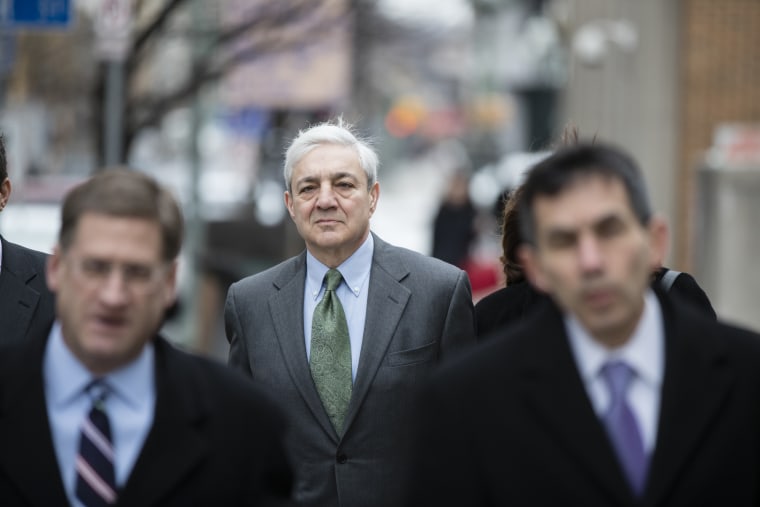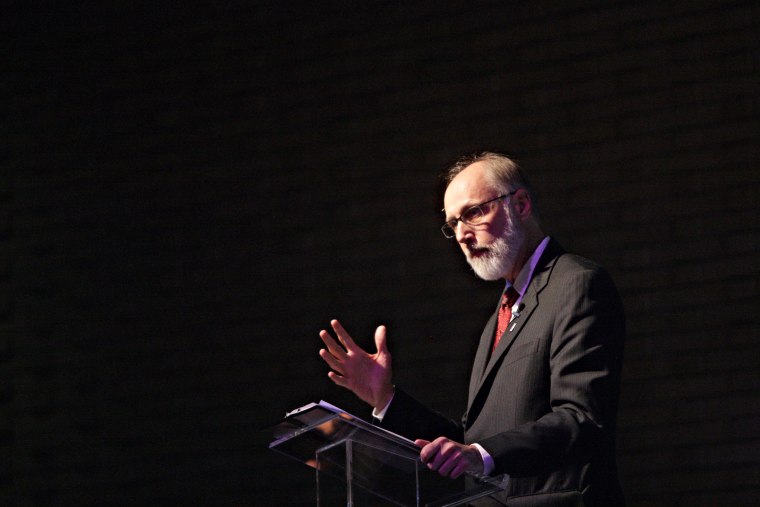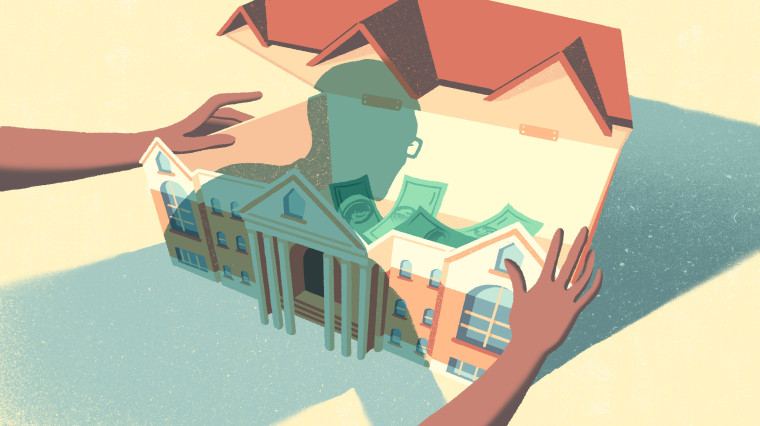This article about how colleges are managed was produced in partnership with The Hechinger Report, a nonprofit, independent news organization focused on inequality and innovation in education. This is part 2 of the Colleges in Crisis series.
When Missouri Western State University declared a financial emergency this spring, it was widely assumed to have been the fault of the coronavirus pandemic.
But that was only part of the problem.
In the decade since the last recession, Missouri Western had kept hiring, increasing the number of full-time faculty by 5 percent as its undergraduate enrollment was plummeting by nearly 25 percent. Other spending, too, continued to go up. The university overspent its budget by millions of dollars in each of the last five years. Cash reserves sank.
Some members of the institution’s own governing board were surprised when they were confronted with these facts. By then, the president who had overseen that spending had retired.
“The problem that we have right now has not happened this year. It absolutely hasn’t,” his successor, Matthew Wilson, told the board in April during a contentious meeting to plan deep cuts after the coronavirus pandemic shut down the campus. “It’s the previous budgets that weren’t done correctly.”

Left vulnerable when the pandemic hit, Missouri Western, in St. Joseph, Missouri, is now cutting nearly a third of its faculty and at least 98 majors, minors and concentrations, including in English, history, chemistry, biology, philosophy, sociology, political science, computer technology, music and art.
Like many businesses, universities and colleges are struggling with a crisis that was not of their own making. But, according to observers and statistics, many left themselves exposed to it through decisions made well before the pandemic that have put them in particularly precarious financial situations.
They added employees and facilities, even as enrollment fell. They gave out so many discounts to fill seats that their revenues couldn’t keep pace with costs. They got lackluster returns from their endowments. They were accused of ignoring or covering up complaints of sexual and other misconduct that traumatized victims and consumed hundreds of millions of dollars in settlements and fines. They made huge payouts to presidents who had led them into deficits and during events that led up to those scandals.
American higher education is composed of thousands of colleges and universities, with different track records and results. But if it’s judged as a whole in the way that other industries are, its collective choices have left it singularly susceptible to sudden downturns like the health emergency that’s thrown it into chaos now, researchers and advocates say.
“What this whole crisis has done to higher education is just exposed the cracks that have been there for over a decade of financial mismanagement,” said Fernanda Borges Nogueira, senior network program manager at the Roosevelt Institute, a think tank that advocates for making colleges affordable and more accessible.
The reasons for the recent financial chaos include incentives that encourage leaders to spend more, not less, under the watch of governing boards meant to be trustees of a multibillion-dollar industry that instead often consider themselves to be “boosters, cheerleaders and donors,” as a task force chaired by former Yale University President Benno Schmidt put it.
Among other problems, 1 in 4 higher education institutions had no financial contingency plan when COVID-19 hit, the consulting firm EAB found.
This has left them vulnerable to big deficits racked up during shutdowns in the spring, and to expected losses in the fall. Public universities face their biggest challenges from deep expected budget cuts, while private colleges worry most about an interruption in their revenue. The situation is worse in the Northeast and Midwest, where colleges were already facing big enrollment drops.
Faculty and staff are being laid off and whole departments eliminated. And while most schools are avoiding the bad optics of raising tuition this year, history suggests these costs will eventually fall to students and their families.
Related: Desperate for students, colleges resort to previously banned recruiting tactics
Reforming long-standing practices that have eroded colleges’ and universities’ finances “are complicated decisions, and not easy to achieve,” said Kevin McClure, an associate professor of higher education at the University of North Carolina Wilmington. “But had they been done before there was a crisis, it might have put them on sturdier footing.”
Even after the 2008 recession struck a powerful warning blow, higher education leaders returned to operating in ways that left their institutions at financial risk, experts say.
“We didn’t really change anything in a major way,” said Paul Friga, a clinical associate professor at the Kenan-Flagler Business School at the University of North Carolina at Chapel Hill and co-founder of ABC Insights, a consulting firm that helps institutions improve efficiency.
Colleges and universities“just kept spending more every year,” he said, adding employees and charging more tuition.
Since that last recession, as enrollment declined by about 12 percent, according to the National Student Clearinghouse Research Center, federal data shows that universities and colleges nationwide increased their number of employees by 5 percent. This staffing figure is through 2017, the most recent period available, and includes a 16 percent jump in the number of administrators and support personnel — a perennial target of critics — but also a 7 percent increase in the number of full-time faculty.
While labor productivity in the broader economy has gone up since the last recession, measured by the Bureau of Labor Statistics as output per employee hours worked, higher education has been adding more employees to serve fewer customers.
“Teaching is the only profession, with the possible exception of prostitution, that has had no productivity improvement in the 2,400 years since Socrates taught in Athens,” said Richard Vedder, an emeritus professor of economics at Ohio University and a longtime critic of the ways universities are managed.
Related: Enrollment and financial crises threaten growing list of academic disciplines
Meanwhile, to contend with that years-long enrollment decline, private colleges and universities have been offering deeper discounts to prospective students; of the revenue they take in from tuition, half is now handed back in the form of discounts and financial aid, the National Association of College and University Business Officers reports.
This means that, even as they raise their advertised prices faster than the rate of inflation, some institutions are offering so many givebacks that they can’t keep up with the inflation rate, a destructive cycle few for-profit businesses would survive.
Yet higher education has also kept building. Colleges and universities collectively spent an average of $11 billion each of the last four years adding close to 70 million more square feet of classroom and office space alone, according to the private company Dodge Data & Analytics. That does not include athletic facilities, dorms, dining halls, libraries or labs.
This “arms race in facilities has gotten too far in front of reasonable expectations for revenues to support it,” the facilities consulting firm Gordian warned in early spring.
For more of NBC News' in-depth reporting, download the NBC News app
University leaders are propelled by incentives such as college rankings that reward them based on such things as resources made available to faculty and how much they spend per student. Some presidents get bonuses if their institutions move up the lists, and few leave office without boasting about how many new facilities they built. In a system of shared governance, they’re also served by keeping the faculty content.
What oversight exists comes from boards of regents and trustees composed in large part of wealthy alumni and political appointees. While many have private-sector experience that could be helpful to a college, more than 40 percent acknowledged in a survey by the Association of Governing Boards that too little time is spent on their own training. One in 4 say too little time is spent evaluating their institutions’ presidents.
Another thing universities generally haven’t managed well: their endowment wealth, on which they’ve realized surprisingly poor returns.
Related: While focus is on fall, students’ choices about college will have a far longer impact
Investments they make from their endowments “significantly underperform” market benchmarks, according to research by business professors at New York University and Georgetown. Despite slumping revenues and comparatively poor returns, however, universities continue to provide more generous employee benefits than those in other industries.
Sixty-three percent of people who work at colleges and universities get health care provided for them after they retire, reports the TIAA Institute, a think-tank spinoff of the academic financial services provider TIAA. That’s a perk the Kaiser Family Foundation says is enjoyed by just 25 percent of employees at other types of businesses with 200 workers or more.
Full-time faculty receive contributions to their retirement plans equal to an average of 10.7 percent of their salaries, the American Association of University Professors says; that’s more than double the national average employer contribution to employee 401(k)s, as reported by Fidelity Investments.
Some administrators get other extras. Two-thirds of presidents are provided housing or receive housing allowances, according to the College and University Professional Association for Human Resources. Seventy percent of presidents get cars.
Related: Another pandemic-related threat to universities: falling numbers of graduate students
These financial strains have seldom been as visible as they are now, when universities are struggling to balance their budgets. Georgetown has announced that it will suspend contributions to its employee retirement plans, saying the move will save $47 million over the next year.
The decentralized nature of universities also complicates their finances. Academic departments and graduate schools often handle their own information technology, purchasing and other functions, with separate staffs. In a survey about just one of those services, by Educause, an association of IT leaders, half couldn’t estimate the amount their institutions were spending on IT.
Related: Little-noticed victims of the higher education shutdowns: college towns
This seeming lack of accountability reaches to the highest levels.
University governing boards have given lavish severance packages to leaders who oversaw their campuses during events that led to scandals, or who drove them into debt. That’s often because the boards fear being sued, or their institutions’ reputations being damaged by an ugly split, said James Finkelstein, professor emeritus of public policy at George Mason University’s Schar School of Policy and Government, who studies university spending.
After sexual abuse by a former Pennsylvania State University assistant football coach was exposed, for example — which the university had been warned repeatedly about, and which has cost it nearly a quarter of a billion dollars in settlements, fines and legal fees — the president at the time, Graham Spanier, stepped down. But he left with an agreement to be paid $3.7 million over the next six years as a member of the faculty, even though he didn’t have an office on the campus and didn’t teach, The Associated Press reported.

Spanier was convicted of child endangerment, a decision overturned by a federal judge last year in a ruling being appealed by the state’s attorney general. Spanier did not respond to an emailed request for comment. A university spokeswoman would say only: “Graham Spanier is a tenured faculty member on paid administrative leave. We have nothing to add.”
Governing boards have often made these kinds of agreements in secret, or sought to block public knowledge of them. In a closed-door meeting, the Northern Illinois University board voted to give university President Douglas Baker $700,787 in severance pay, legal costs and unused vacation time when he resigned after the state’s inspector general found reasonable cause to conclude he had mismanaged the public institution by evading competitive bidding rules. When he left, the university had a $35 million funding shortfall and a bond rating that had fallen to junk status.

Baker could not immediately be reached for comment, but said in his resignation statement that the state report was a distraction and he left because “I simply couldn’t stand by and let this situation continue to fester.” Asked why he had received such a large payout, a university spokeswoman referred to a 2017 statement by then-board chair Wheeler Coleman, who said Baker had released the university from legal claims and waived his right to a $225,000-a-year faculty position.
Presidents who successfully finish their terms increasingly receive “contract completion bonuses.” Thirteen percent of public university presidents are entitled to as much as $1 million after they leave, Finkelstein determined in research he conducted with Schar School colleague Judith Wilde.
Related: Could the online, for-profit college industry be “a winner in this crisis”?
Other decisions of the past 10 years are also having an effect now. The University of Akron, for example, plans to cut more than 1 in 6 full-time professors because of a budget crisis that has been accelerated by the pandemic. Faculty complain the university has simultaneously increased spending on athletics, which lose an average of $22 million a year. A university spokesman said in a statement that its spending on athletics “is certainly not the reason for our financial situation,” which he said has resulted from enrollment and state funding trends. However, the current president, Gary Miller, has set up an athletics review task force.
At Missouri Western State University, cash reserves fell from nearly $50 million to $14 million as its president, Robert Vartabedian, was running up $11 million in deficits — red ink finally revealed by the student newspaper — but the board of governors still gave Vartabedian a contract extension, raised his salary by 35 percent and even renamed a building after him.
Vartabedian could not immediately be reached for comment, though in a guest column he wrote for a local newspaper after he retired, he said that he left “what we believed to be a balanced budget” and that all expenditures had been approved by the board.
Of the way that higher education has acted since the last recession, his successor, Wilson, said in an interview, “Anybody who doubted the need to change, all they need to do is look around.”
He said, “When you have increasing costs with the same amount of resources, unless you are increasing your tuition, it’s very difficult for you to keep up without taking something away.”
Now the bills are piling up, there and on campuses everywhere.
Some university leaders “bristle at the idea that they should have seen it coming,” McClure, of UNC Wilmington, said of the current crisis. “Part of me is sympathetic to that view. It’s a lot easier to look backwards and say what you should have done to prepare for something no one could have seen coming.”
On the upside, he said, the pandemic and resulting recession could finally force change.
“Sometimes it takes a shock to the system to really see creativity happen,” McClure said. “And this is likely going to be a shock to the system.”
Sign up for The Hechinger Report’s higher education newsletter.


